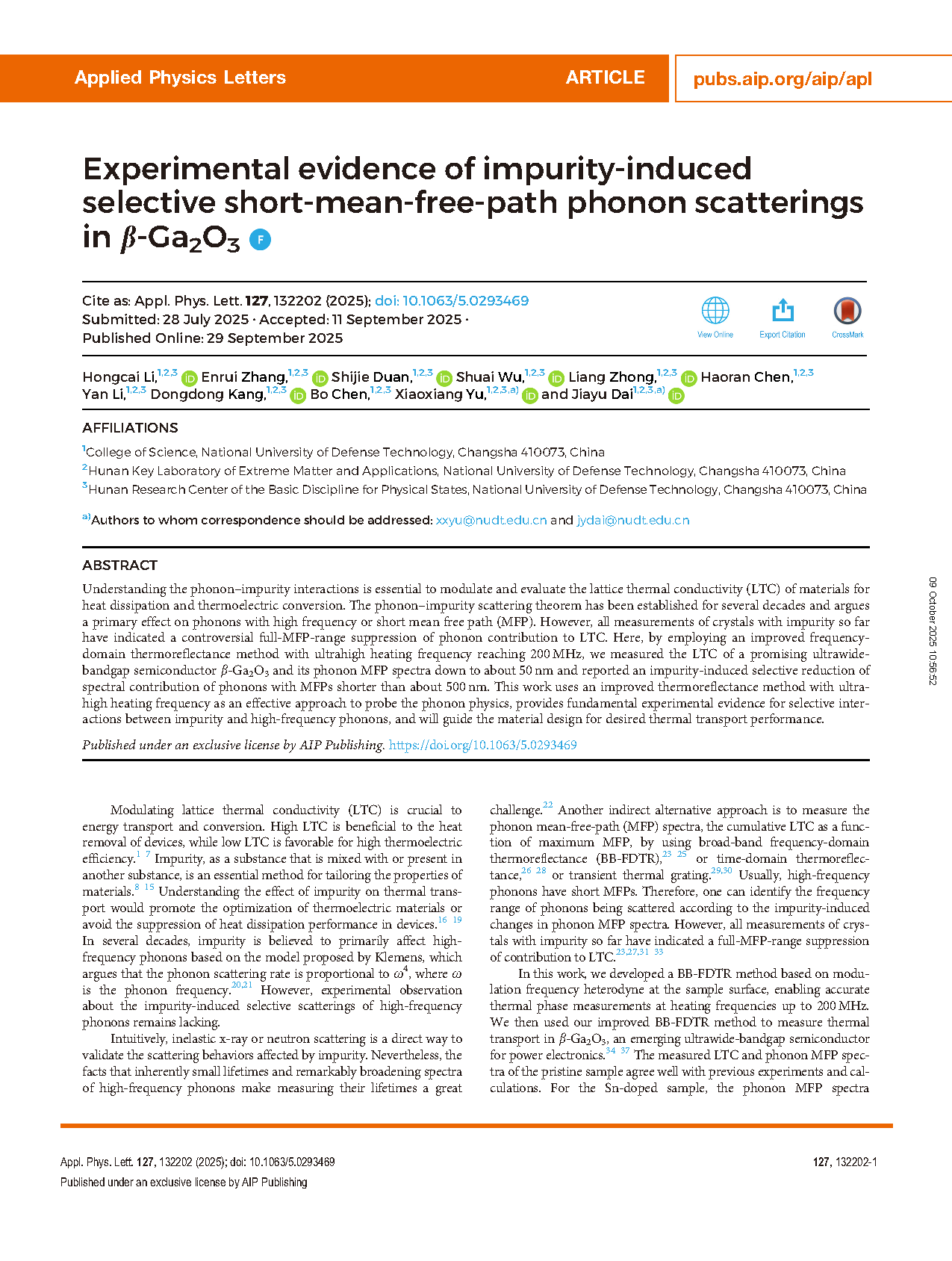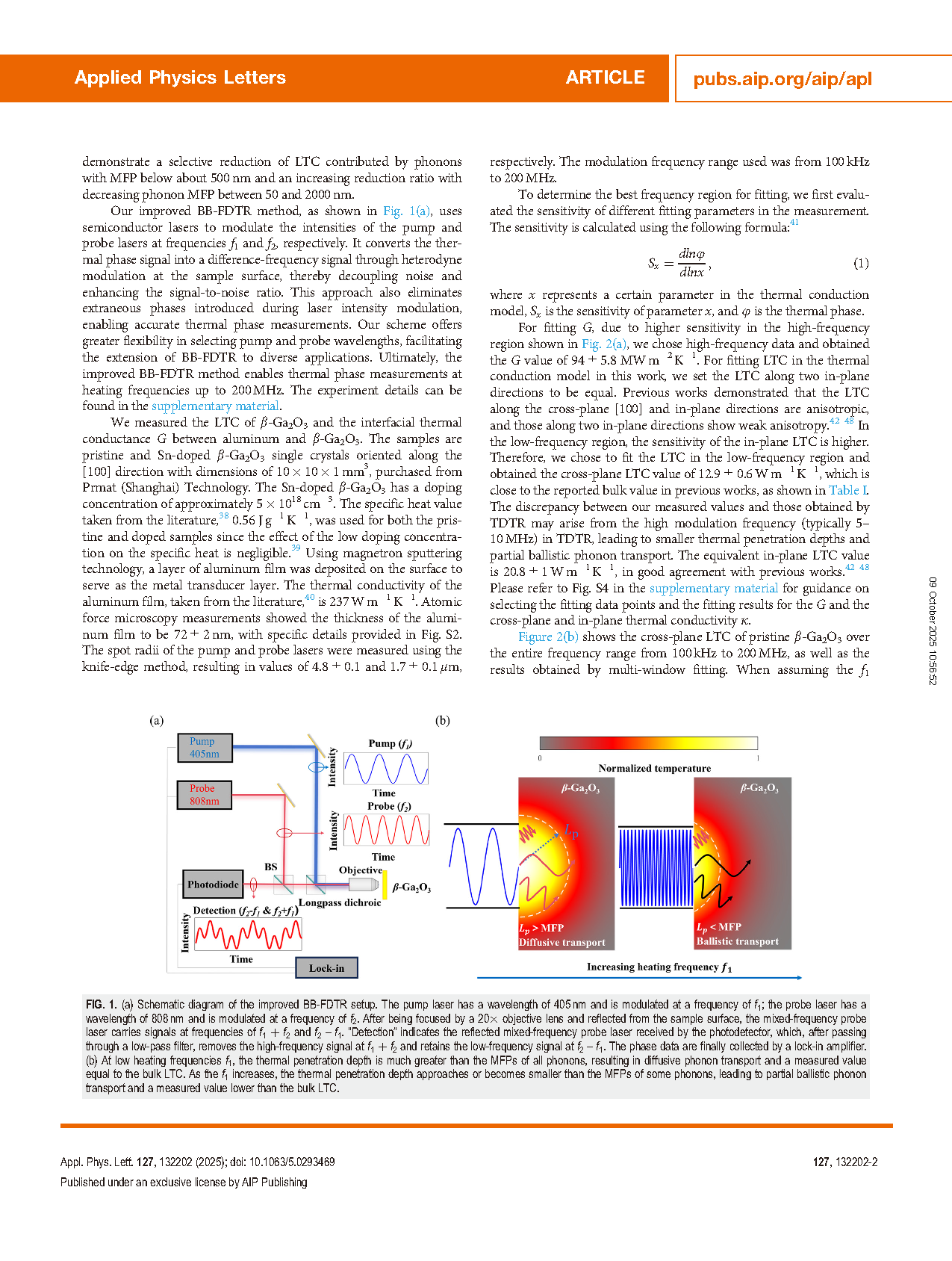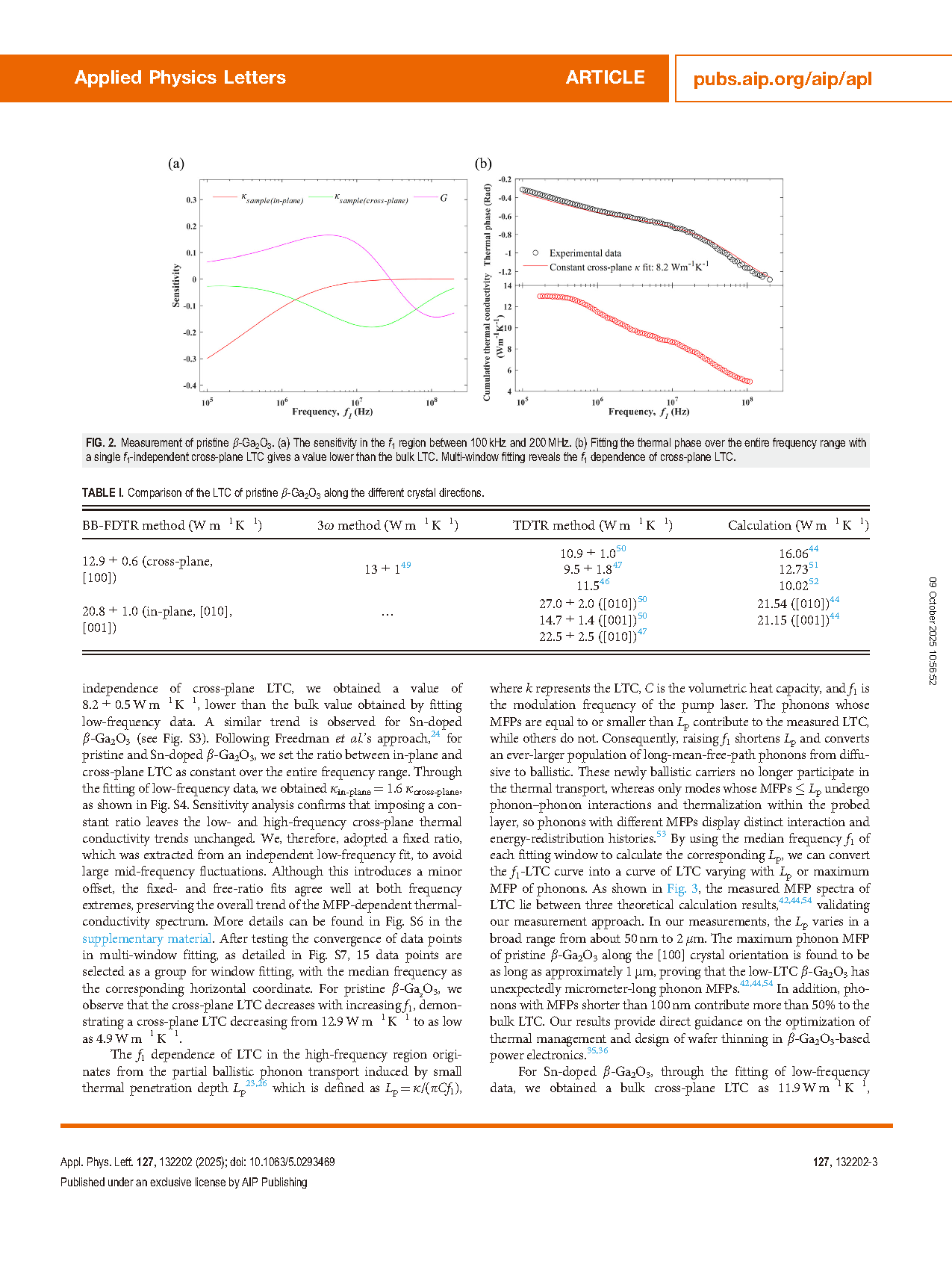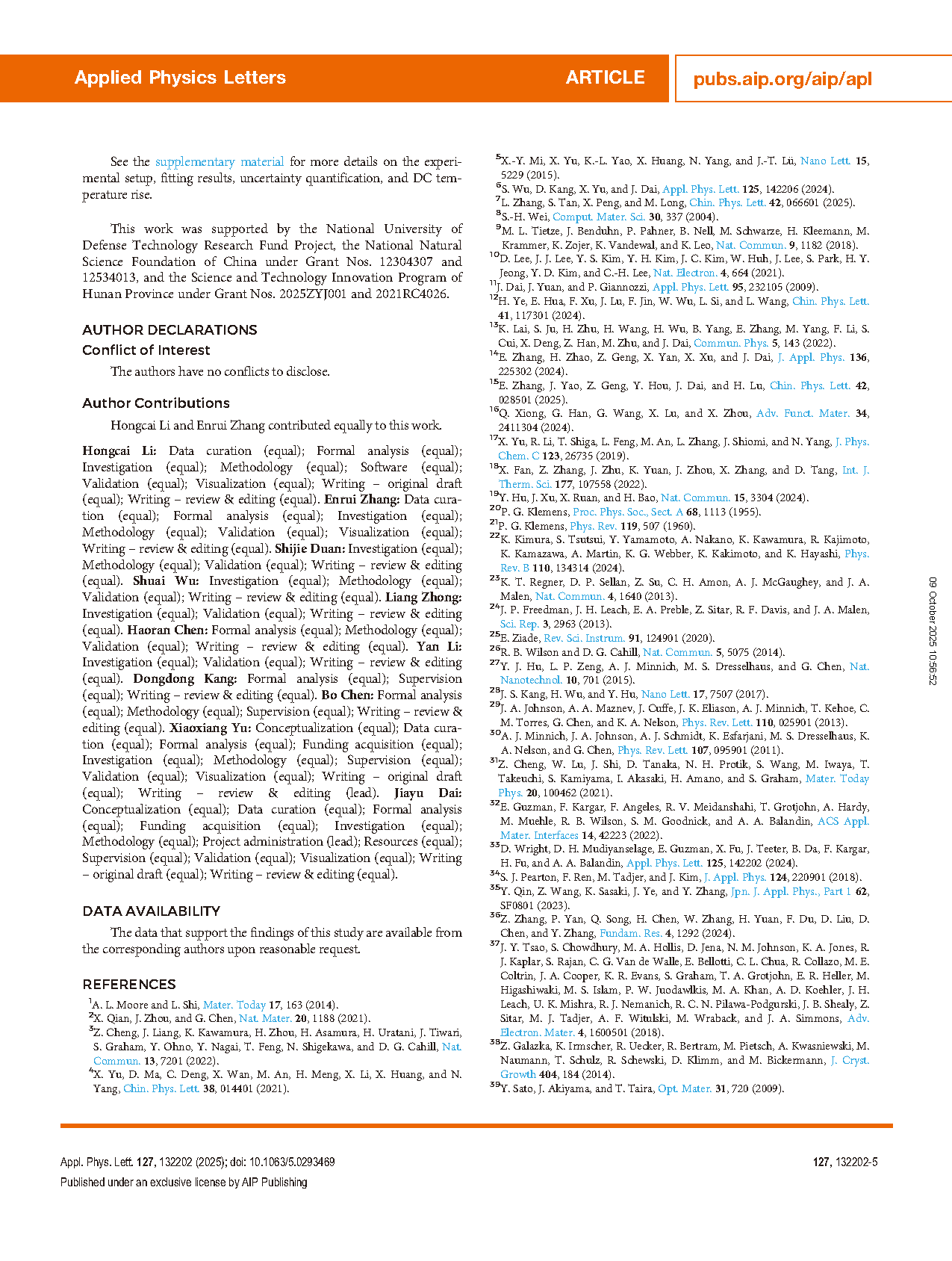

【Domestic Papers】Experimental evidence of impurity-induced selective short-mean-free-path phonon scatterings in β-Ga₂O₃
日期:2025-10-28阅读:154
Researchers from the National University of Defense Technology have published a dissertation titled "Experimental evidence of impurity-induced selective short-mean-free-path phonon scatterings in β-Ga2O3" in Applied Physics Letters.
Project Support
This work was supported by the National University of Defense Technology Research Fund Project, the National Natural Science Foundation of China under Grant Nos. 12304307 and 12534013, and the Science and Technology Innovation Program of Hunan Province under Grant Nos. 2025ZYJ001 and 2021RC4026.
Background
Modulating lattice thermal conductivity (LTC) is crucial to energy transport and conversion. High LTC is beneficial to the heat removal of devices, while low LTC is favorable for high thermoelectric efficiency. Impurity, as a substance that is mixed with or present in another substance, is an essential method for tailoring the properties of materials. Understanding the effect of impurity on thermal transport would promote the optimization of thermoelectric materials or avoid the suppression of heat dissipation performance in devices. In several decades, impurity is believed to primarily affect high-frequency phonons based on the model proposed by Klemens, which argues that the phonon scattering rate is proportional to ω4, where ω is the phonon frequency. However, experimental observation about the impurity-induced selective scatterings of high-frequency phonons remains lacking.
Abstract
Understanding the phonon–impurity interactions is essential to modulate and evaluate the lattice thermal conductivity (LTC) of materials for heat dissipation and thermoelectric conversion. The phonon–impurity scattering theorem has been established for several decades and argues a primary effect on phonons with high frequency or short mean free path (MFP). However, all measurements of crystals with impurity so far have indicated a controversial full-MFP-range suppression of phonon contribution to LTC. Here, by employing an improved frequency-domain thermoreflectance method with ultrahigh heating frequency reaching 200 MHz, we measured the LTC of a promising ultrawide-bandgap semiconductor β-Ga2O3 and its phonon MFP spectra down to about 50 nm and reported an impurity-induced selective reduction of spectral contribution of phonons with MFPs shorter than about 500 nm. This work uses an improved thermoreflectance method with ultrahigh heating frequency as an effective approach to probe the phonon physics, provides fundamental experimental evidence for selective interactions between impurity and high-frequency phonons, and will guide the material design for desired thermal transport performance.
Conclusion
In summary, we employed an improved BB-FDTR technique to measure the LTC and MFP spectra of pristine and Sn-doped β-Ga2O3 single crystals along the [100] crystal orientation. The maximum phonon MFP in pristine β-Ga2O3 is approximately 1 lm, and phonons with MFPs shorter than 100 nm contribute more than 50%. These results address a critical knowledge gap about phonon MFP spectra of β-Ga2O3, and guide the optimization of thermal management and wafer thinning in power electronics applications. Through comparative measurements of the Sn-doped sample, we observed two regimes in phonon MFP spectra: reduced contributions of phonons with MFPs below ~500 nm, while negligible effects on long-MFP phonons. Our results experimentally confirm the phonon–impurity selective interactions at high frequency.
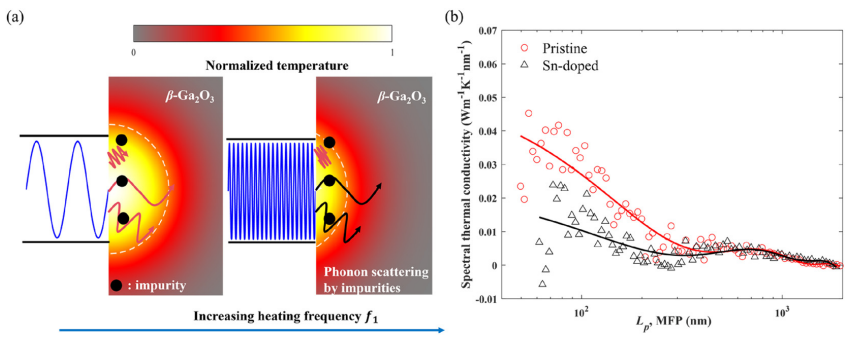
FIG. 1. (a) Schematic diagram of the improved BB-FDTR setup. The pump laser has a wavelength of 405 nm and is modulated at a frequency of f1; the probe laser has a wavelength of 808 nm and is modulated at a frequency of f2. After being focused by a 20× objective lens and reflected from the sample surface, the mixed-frequency probe laser carries signals at frequencies of f1 + f2 and f2 – f1. “Detection” indicates the reflected mixed-frequency probe laser received by the photodetector, which, after passing through a low-pass filter, removes the high-frequency signal at f1 + f2 and retains the low-frequency signal at f2 – f1. The phase data are finally collected by a lock-in amplifier. (b) At low heating frequencies f1, the thermal penetration depth is much greater than the MFPs of all phonons, resulting in diffusive phonon transport and a measured value equal to the bulk LTC. As the f1 increases, the thermal penetration depth approaches or becomes smaller than the MFPs of some phonons, leading to partial ballistic phonon transport and a measured value lower than the bulk LTC.
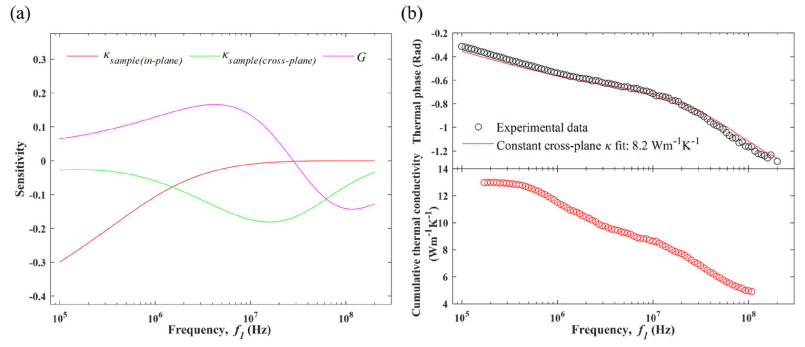
FIG. 2. Measurement of pristine β-Ga2O3. (a) The sensitivity in the f1 region between 100 kHz and 200 MHz. (b) Fitting the thermal phase over the entire frequency range with a single f1-independent cross-plane LTC gives a value lower than the bulk LTC. Multi-window fitting reveals the f1 dependence of cross-plane LTC.
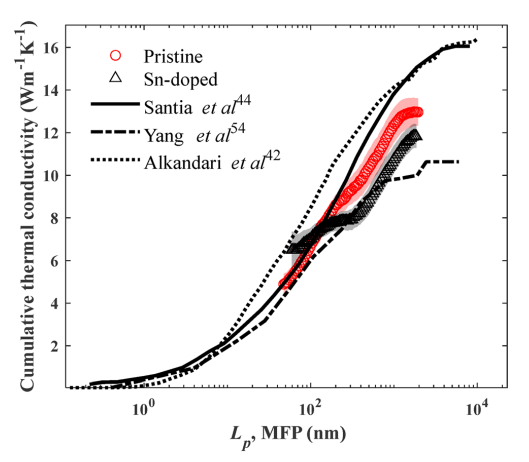
FIG. 3. The experimental measurements of phonon MFP spectra for pristine and Sn-doped β-Ga2O3 at room temperature, along with comparisons with theoretical calculations. The shaded areas represent the measurement uncertainties.

FIG. 4. (a) Impurity-induced scatterings of short-MFP or high-frequency phonons. Phonons with different mean free paths or frequencies are represented by sine curves with different periods and lengths, respectively. (b) The contribution of different MFP phonons to LTC. Impurity induces a reduction of the short-mean-free-path phonon contribution to LTC. The solid line is a polynomial-fit guide for the eyes.
DOI:
doi.org/10.1063/5.0293469
